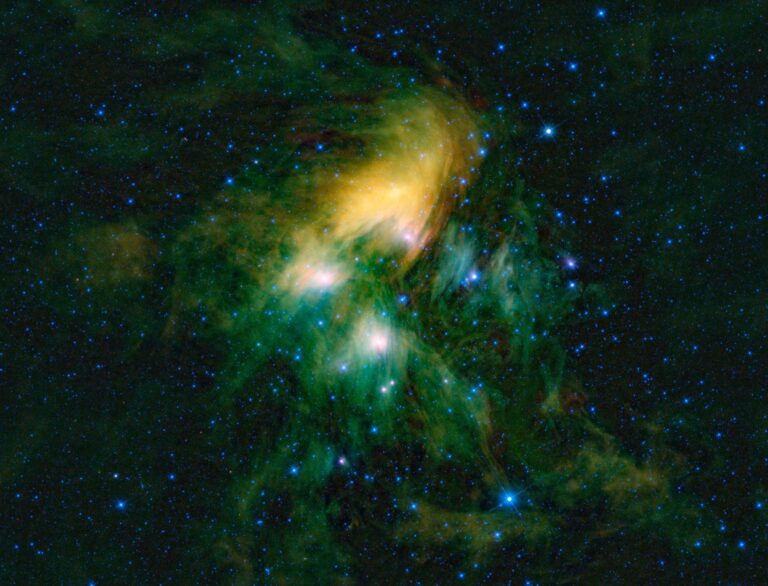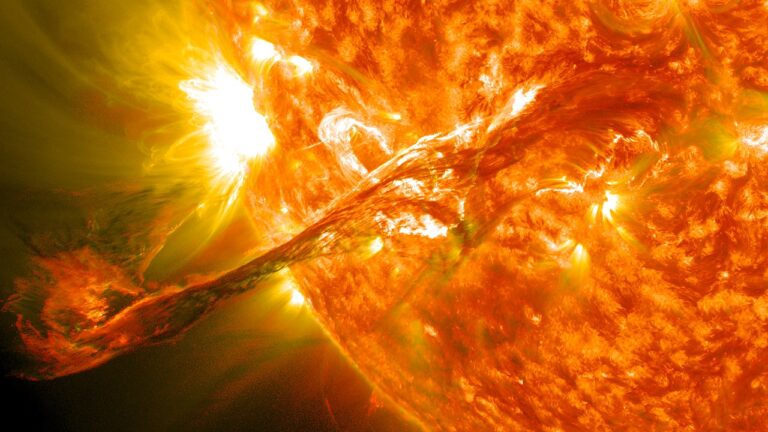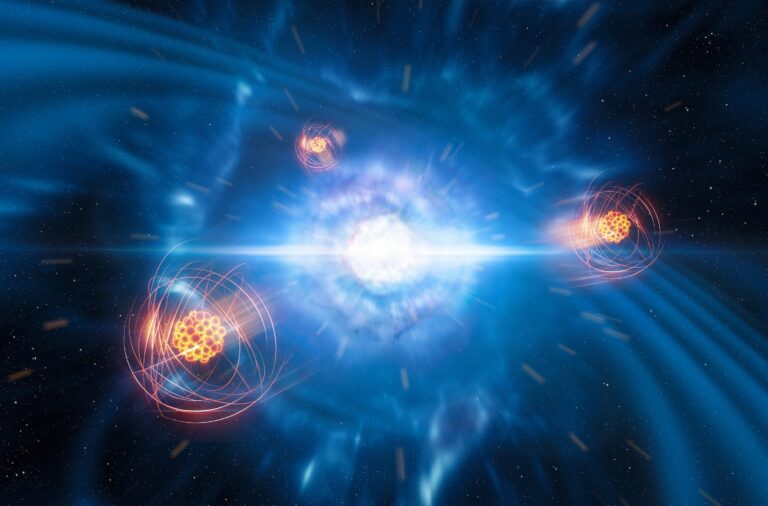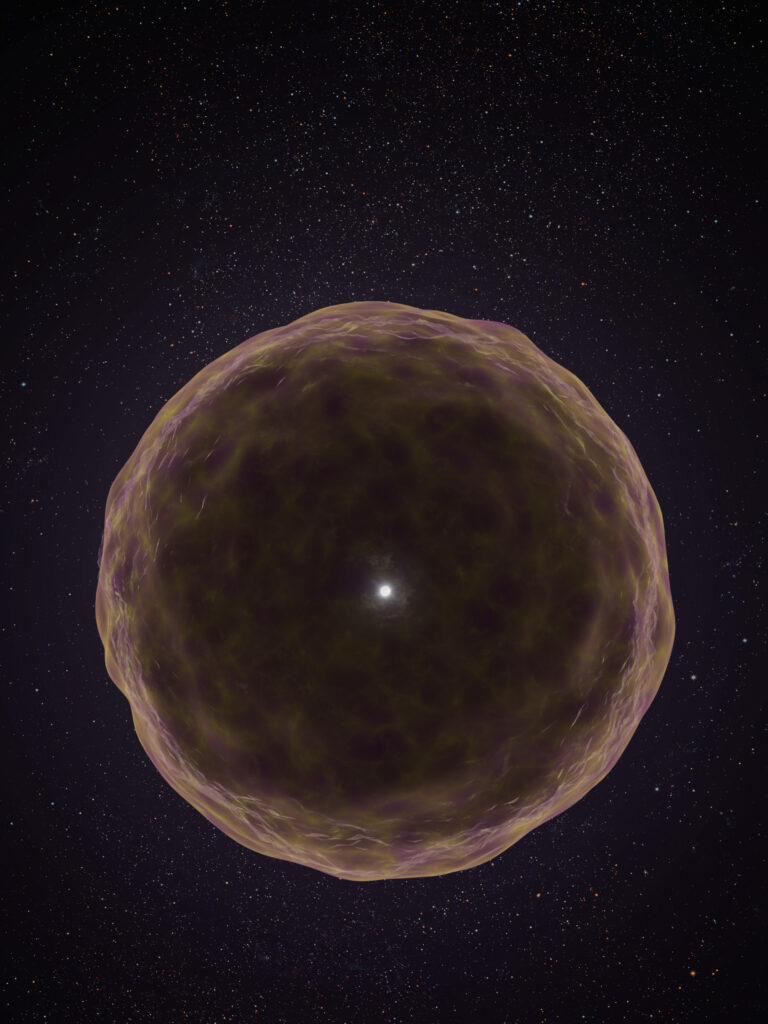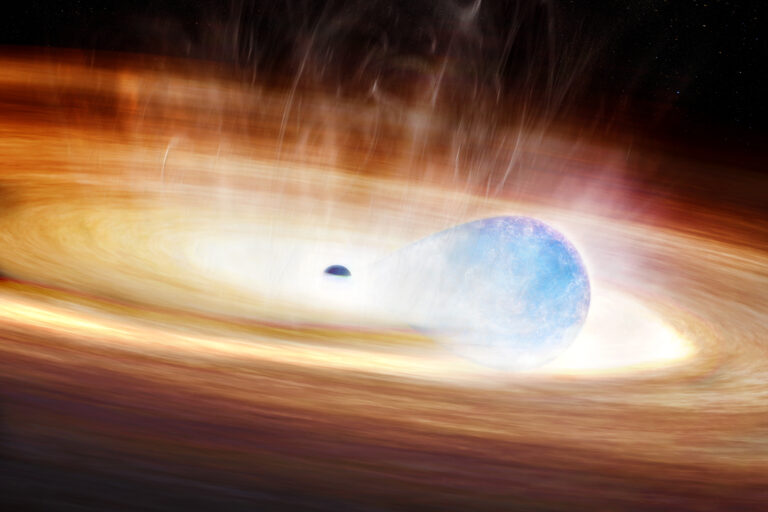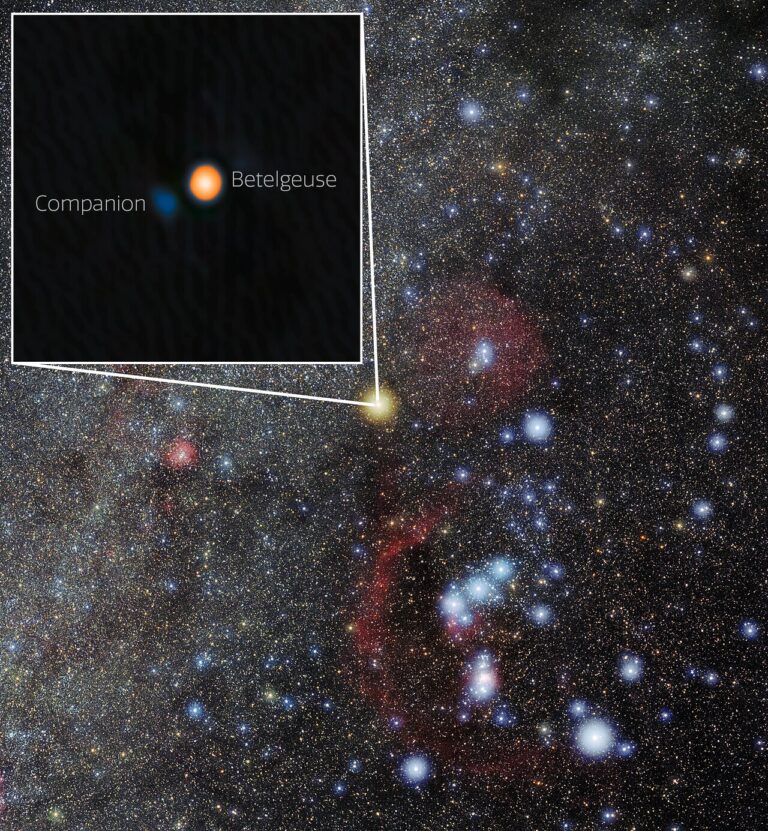
Key Takeaways:
- Star formation begins with protostars in cold molecular clouds, where gravitational contraction precedes nuclear fusion, and their early evolutionary stages are best characterized through longer-wavelength infrared observations.
- The James Webb Space Telescope (JWST) conducted observations of Herbig-Haro object 49/50 (HH 49/50), an outflow originating from a protostar within the nearby Chamaeleon I molecular cloud, a known low-mass star-forming region.
- JWST's detailed near- and mid-infrared imaging of HH 49/50 elucidated its structure, revealing intricate arcs and emissions from hydrogen, carbon monoxide, and energized dust, which are generated by high-velocity jets from the embedded protostar Cederblad 110 IRS4 impacting surrounding material.
- These observations resolved a prior Spitzer Space Telescope conundrum, identifying a feature at HH 49/50's tip as a remote spiral galaxy, complementing earlier JWST findings of various frozen molecules in the Chamaeleon I cloud.
The Sun generates energy through nuclear fusion, converting some 600 million tons of hydrogen into helium every second. This process began nearly 5 billion years ago, and it will continue for at least another 5 billion years.
But the Sun did not pop into existence fully formed. It started its long journey to stardom in a cold molecular cloud. Instabilities within this dusty gas cloud triggered small pockets to contract. Gravity worked its magic, compressing each clump into a smaller and denser sphere while simultaneously drawing in more material from its surroundings. The object’s core heated up, and it radiated energy that eventually escaped as light and heat. Astronomers call such a developing star a protostar; it won’t become a full-fledged star until fusion ignites.
Protostars are notoriously difficult to observe in visible light because the gas and dust that still surrounds them hinders our view. Fortunately, longer-wavelength infrared radiation largely penetrates the dust and affords a much clearer picture of this early phase of star formation.
A cosmic tornado
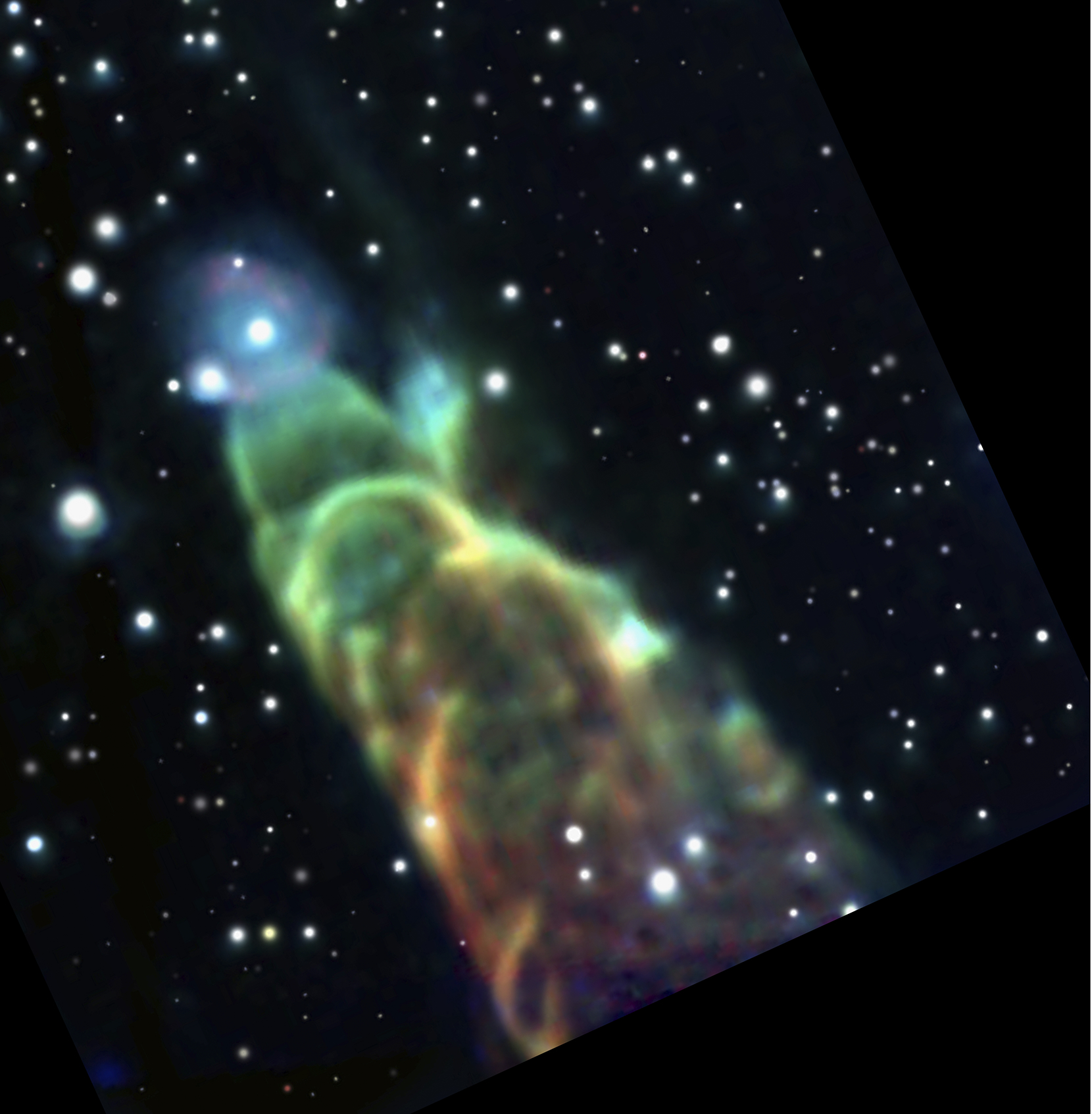
It’s no wonder scientists wanted to turn the powerful infrared eye of the James Webb Space Telescope (JWST) on a particularly bright and nearby protostar and its environment. Researchers targeted Herbig-Haro object 49/50 (HH 49/50), the outflow from a protostar embedded in the Chamaeleon I molecular cloud complex. This cloud lies about 625 light-years from Earth in the southern constellation Chamaeleon, and it represents one of the closest regions churning out low-mass stars similar to the Sun.
HH 49/50 is the visible manifestation of high-powered jets ejected by the protostar. The jets, which travel at 60 to 190 miles per second (100 to 300 kilometers per second), create shock waves when they smash into denser material. The heated gas and dust slowly cool, emitting the infrared light JWST detects.
When the retired Spitzer Space Telescope viewed HH 49/50 in 2006, researchers dubbed it the “Cosmic Tornado” for its twisted, conical shape. JWST observed the object in much greater detail at five near- and mid-infrared wavelengths, capturing the glow from molecules of hydrogen and carbon monoxide as well as energized dust. The intricate arcs seen within HH 49/50 mimic the ripples seen in a speedboat’s wake. They point back to the protostar suspected of creating all this havoc, Cederblad 110 IRS4, which lies some 1.5 light-years away off the lower right edge of the image.
Astronomers have aimed JWST’s instruments at the Chamaeleon I molecular cloud before. In 2023, different researchers took the spectral fingerprint of ices in the cloud. They detected frozen water, ammonia, methane, and methanol, among others. The discovery offered further evidence that many of the molecules that primitive comets and asteroids likely delivered to Earth may not be unique to our solar system but a common feature in other star-forming regions.
A true Chameleon
The latest JWST image solves a conundrum that cropped up in Spitzer’s observation. That earlier photo (at left) showed a “star” surrounded by a faint halo at HH 49/50’s tip. The astronomers speculated that it could be physically associated with the outflow or a chance alignment.
JWST leaves no doubt. The “star” and its halo are actually the central bulge and spiral arms, respectively, of a remote, face-on spiral galaxy. Thousands of years from now, as HH 49/50’s outflow continues to expand, it may well obscure this distant island universe.

